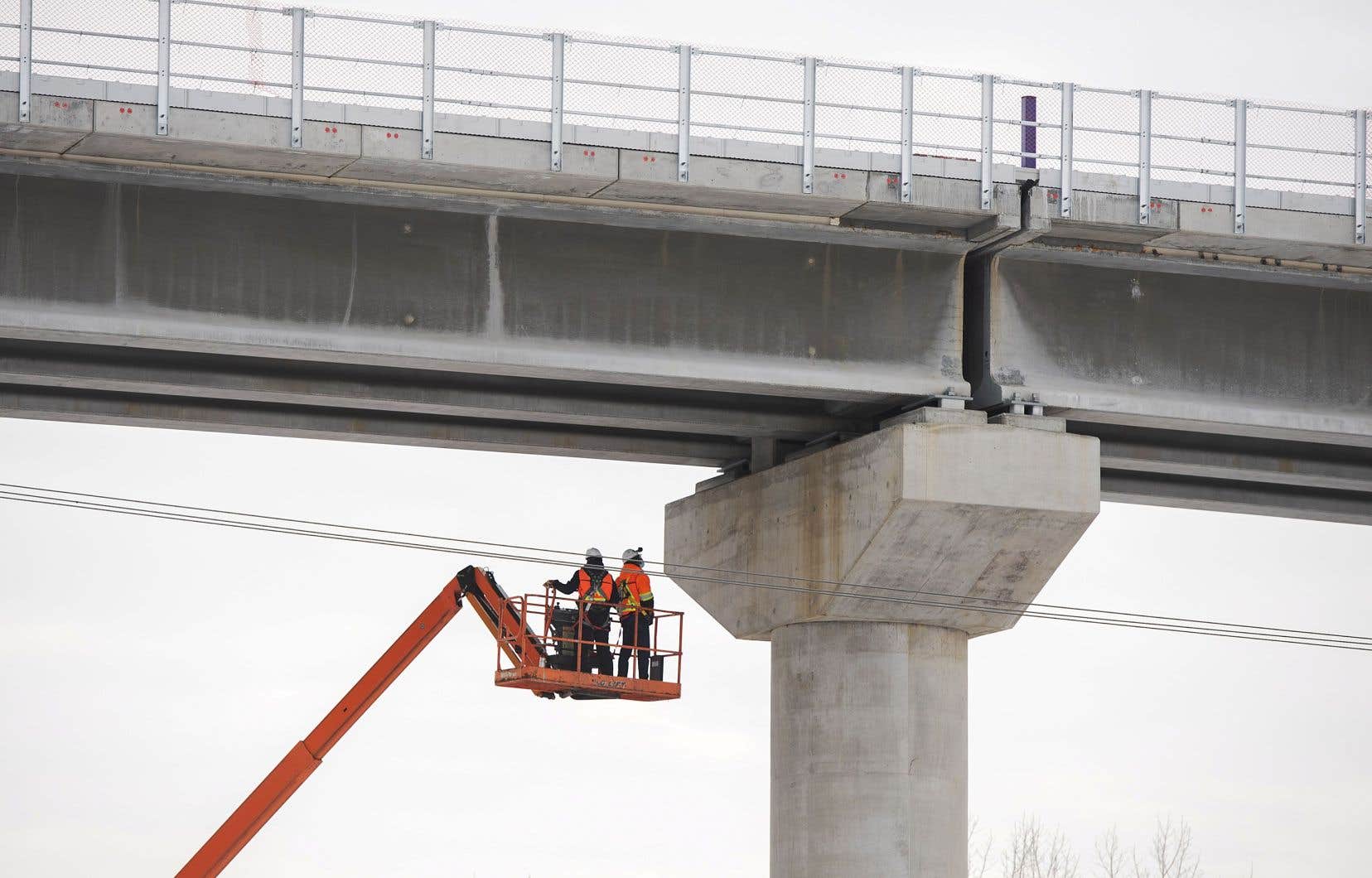The construction of the Eastern Structuring Project (PSE) – formerly known as the Eastern REM – will be completed at the earliest in 2036, if the project led by the Regional Metropolitan Transport Authority (ARTM) receives the green light from the government. Legault this year. However, the Legault government already estimates that the bill of nearly 36 billion mentioned by the organization “exceeds the ability of Quebecers to pay”.
“We will have to work to reduce the costs and the overall bill at which the ARTM arrived. We will continue, with all the partners, the analysis of the project and possible extensions, ”continues the office of the Ministry of Transport and Sustainable Mobility, in a written statement sent to the media on Tuesday afternoon.
Quebec thus reacted to the conclusions unveiled earlier in the day of the report produced by the ARTM on the light rail metro project which should connect the northeast and east of Montreal to stations on the green line of the Montreal metro. in addition to planning extensions to Rivière-des-Prairies, Laval and the municipalities of Lanaudière. The scenario that was chosen – from a dozen options analyzed – provides that the 34 km of this route will be built underground, in particular to respond to the concerns of residents of Mercier-Est who would have been inconvenienced by aerial structures.
“Obviously, if the aerial route does not respect the constraints of urban integration, we have no choice but to bury it in the Mercier-Est sector. And to avoid having to ride a roller coaster to get to the surface to come back down a little later, we decided to also bury the project in Mercier-Ouest”, as well as along Sherbrooke Street East, thus leading to an entirely underground route, explained Tuesday at a press conference the project director for the PSE, Marc Dionne.
Risks to consider
The result is a bill valued at $35.9 billion for the completion of this colossal project, initially presented by CDPQ Infra, which in December 2020 valued this adventure at $10 billion.
Part of this discrepancy stems from the fact that the route proposed by CDPQ Infra at the time provided for light rail to travel part of the route on aerial structures, making this initiative less costly. But that’s not all. The cost analysis of the public transport project that had been carried out by the subsidiary of the Caisse de depot et placement du Québec also included certain shortcuts which contributed to an artificially lower bill, suggested Marc Dionne.
“CDPQ Infra presented costs in 2022 dollars, which presupposes that the entire project would be completed in 2022,” explained Mr. Dionne. The ARTM, for its part, took into account the fact that the construction of this public transport project will take more than a decade to adapt the estimated bill accordingly, in particular to take inflation into account. . The organization has also planned a “provision” to take into account various “risks” that could inflate the bill for the project, such as an “earthquake”, a pandemic or an “overheating of the real estate market”, mentioned Mr. Dione. Thus, the new planning rules for the project adopted by the ARTM alone inflated its bill by almost 100%, he explained.
Asked by The duty, Marc Dionne noted, however, that the costs that will be associated with the expropriations that will be necessary to make this public transit project a reality have not yet been accounted for in this report, which has been submitted to the Government of Quebec. “We will continue, with all the partners, the analysis of the project and possible extensions”, assures for its part the Ministry of Transport and Sustainable Mobility.
Not before 2036, if all goes well
At the earliest, this future automated light train, which will be able to accommodate 29,000 passengers during the morning rush hour, would come into operation “around 2036”, indicated Marc Dionne. To do this, the Government of Quebec would have to give its approval to the project “over the next two months”, he added. The first years of the project would thus focus on carrying out the studies and engineering plans required, then the actual construction of this new mode of public transport would be spread over “four or five years”, mentioned Marc Dionne. .
“Everyone agrees on the urgency of acting to open up eastern Montreal. The only way to ensure the development of the east end of the metropolis and to encourage more families, workers and students to settle there is to provide an attractive and efficient public transit service. . The Eastern Structuring Project is an essential project and the government shares this vision,” reacted in writing the person in charge of transport and mobility on the executive committee of the City of Montreal, Sophie Mauzerolle. The latter, however, calls on all the partners in this project to “roll up their sleeves” in order to find ways to “minimize the costs” of it.
The ARTM is also evaluating the possibility of carrying out this public transport project in several stages in order to “reduce the costs and risks” associated with this adventure. “We are going to look at the different types of phasing. Could the project be carried out in two, three or four phases? That’s what we’re going to look at, ”said Mr. Dionne.
